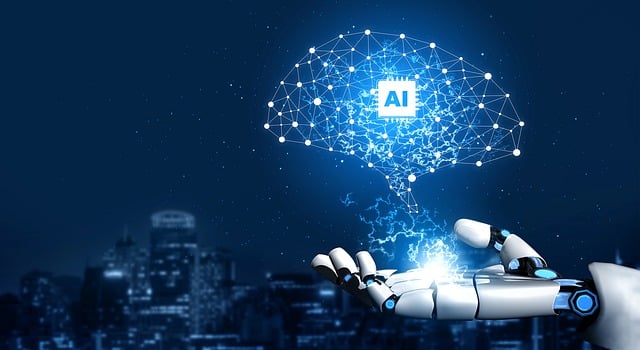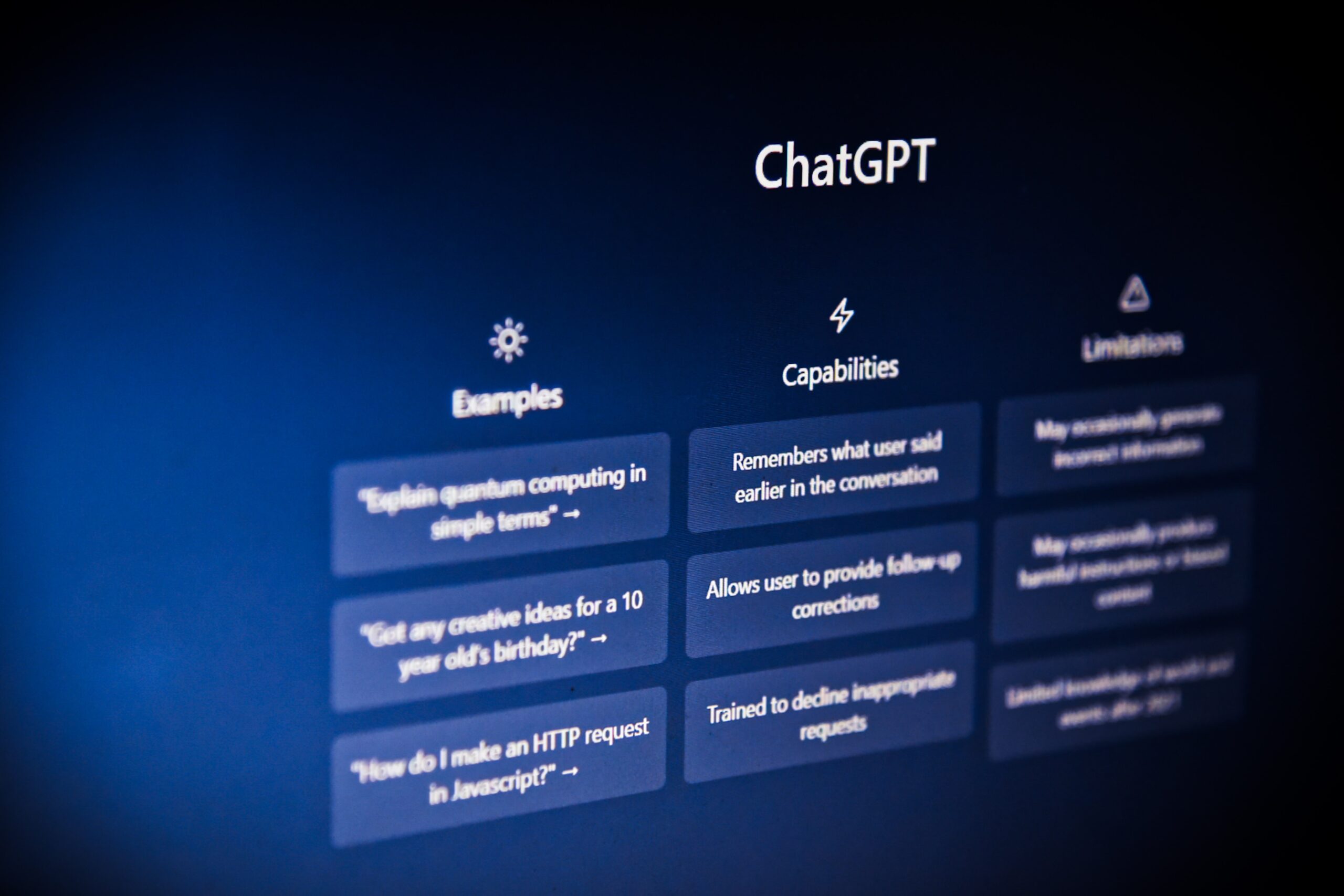Not long ago, people mostly saw Artificial Intelligence as science fiction, a concept only found in movies or books. However, as technology evolves exponentially, AI has become a reality and is already transforming various industries, including education. AI-powered virtual tutors, in particular, have shown great potential in enhancing student learning and revolutionizing how we educate future generations.
Traditional classrooms have limitations, especially regarding personalization and individualization of teaching. With a single teacher handling a large class, providing individual attention and customized learning experiences for each student can be challenging—as each student is expected to adhere to one traditional structure. As such, AI-powered virtual tutors could come in and aid with the challenge.
Virtual tutors can cater to individual student needs and adapt to their learning pace, style, and preferences. They can provide immediate feedback and help students pinpoint areas that need improvement. Virtual tutors can also offer personalized study plans and learning materials based on students’ strengths and weaknesses so that students can learn more effectively.
In 2022, researchers reviewed and analyzed recent research on how AI is used in China, India, and the USA to personalize education. In this study, the researchers utilized Artificial Intelligence to review the past two years’ literature (2019–2021) in English on China, India, and the USA. This process yielded over 2000 search results initially, which were eventually shortlisted to 353 relevant papers for in-depth analysis.
The review concluded that AI helped students learn better by adapting to their learning styles and abilities. It also helped teachers create customized lesson plans and identify areas where students struggled. However, there were also challenges to using AI in education, such as data privacy concerns and the cost of technology.
So today, we’ll be exploring AI’s game-changing impact on education, and we’re going to see how this polarizing technology can potentially transform teaching. We’ll discuss how AI works and its benefits and see what this means for the future of students worldwide. Let’s jump in, shall we?
What is AI, and how do AI-powered Virtual Tutors Work?

Before we get into the nitty-gritty of the impact of AI tutors in education, let’s first learn a few basics on the subject—particularly Artificial intelligence and machine learning. According to Columbia Engineering, the term artificial intelligence encompasses the capacity of computers to replicate human cognitive functions and execute tasks in practical scenarios.
On the other hand, machine learning refers to the specific technologies and algorithms that facilitate systems to recognize patterns, make informed decisions, and enhance performance through experience and data. In simpler terms, for AI to act and think like a human, they utilize machine learning.
That being said, AI-virtual tutors use machine learning to teach their students, relying on vast quantities of analyzed data to understand each student’s learning style, abilities, and progress. The virtual tutor can then use this information to create personalized lesson plans, provide targeted feedback, and recommend additional study materials.
Then, machine learning algorithms continuously analyze and adjust to the student’s performance, providing adaptive learning experiences tailored to each student’s unique needs. Because of this, students can learn more effectively and, ultimately, improve their learning experience.
In 2021, researchers reviewed how digital technology could enhance education in low- and middle-income countries. To shed light on the matter, researchers compiled studies published between 2007 and 2020 and identified 16 randomized controlled trials conducted in five countries involving 53,029 students aged 6-15.
Afterward, the researchers analyzed the impact of personalized and adaptive learning technology on student learning outcomes in mathematics and literacy. They also examined how the technology was delivered, how it was used, and how long and intense the intervention was.
The results showed that personalized and adaptive learning technology had a moderate positive effect size on student learning outcomes. The researchers also found that more personalized approaches adapted to students’ learning levels had a more significant impact than those that only provided personalized feedback, support, assessment, or linked to students’ interests.
This study demonstrated how effective personalized teaching is, as it adapts to the student’s learning level, provides feedback and support, and assesses the student’s abilities—and, amazingly, AI-virtual tutors can do all of these.
What makes AI virtual tutors different from traditional tutors?
As we can see, AI tutors effectively improve children’s learning outcomes. It’s only natural to wonder how AI-virtual tutors compare to traditional tutors and what makes them stand out from the conventional approach.

Advantages
Personalized learning
As mentioned above, AI virtual tutors use machine learning algorithms to create personalized lesson plans for each student. Although traditional tutors may tailor their teaching style to some extent, they cannot provide the level of personalization that AI-powered virtual tutors can in terms of efficiency, as AI tutors can personalize learning in real-time.
Moreover, like all human interactions, it takes some time to get to know a person, and students are no exception. Traditional tutors may need to spend several sessions with students before discovering their learning styles, strengths, and weaknesses. On the other hand, AI-powered virtual tutors can start personalizing the learning experience from the first interaction.
Accessibility
AI virtual tutors can be accessed anywhere and anytime, as long as there is an internet connection. This is particularly beneficial for students who may not have access to traditional tutoring services due to geographical or time constraints. With AI tutors, students won’t have to worry about setting up schedules or traveling to a specific location for tutoring sessions.
They can easily access their virtual tutor from the comfort of their home at a convenient time. Additionally, AI virtual tutors can provide round-the-clock support, allowing students to receive assistance outside regular school hours or when traditional tutors are unavailable.
Consistency
Human tutors can have off days, get sick, or have personal issues that affect their ability to teach effectively. AI virtual tutors guarantee students a consistent and reliable learning experience. The virtual tutor is always available and ready to deliver the same quality of instruction, regardless of the day or time.
Disadvantages
While AI-virtual tutors have their fair share of benefits, there are also some aspects in which traditional tutors outshine them.
Lack of Human Interaction
As humans, traditional tutors can provide a sense of comfort and encouragement that an AI-virtual tutor cannot replicate. Although AI tutors can provide personalized learning experiences, they lack the empathy and emotional support that a human teacher can offer—which can go a long way in teaching.
Research proved this to be the case in 2021 when researchers wanted to explore the relationship between a teacher’s emotional support and their students’ math performance. The researchers also studied how emotional support can affect students’ confidence in their math skills and their engagement in the subject.
To prove this, the researchers used a web-based survey to collect data from 1,294 students in grades 3-5 and 7-8 from 14 different junior middle and primary schools in China. The study’s results revealed that when teachers provided emotional support, it improved students’ confidence in their math skills, which improved their math performance.
The study also found that how a teacher provided emotional support affected the students’ math performance. Ultimately, academic self-efficacy and math behavioral engagement mediated the relationship between emotional support and math performance.
Additionally, traditional tutors can build relationships with their students that go beyond academics. Human tutors can serve as mentors and role models and provide guidance and support in other aspects of their student’s lives, like mental health or personal problems. You may never form this deep connection with an AI virtual tutor.
Human Tutors are More Creative
Regarding creativity, human tutors have a significant advantage over AI tutors. For instance, a human tutor might use analogies or metaphors to explain complex concepts in a way that’s easier for the student to understand. Moreover, teachers can relay information to the students in more relatable ways by comparing it to real-life experiences, which is an excellent way to learn.
In 2022, researchers reviewed and analyzed papers published between 2009 and 2020 about using analogies to teach science concepts like physics, chemistry, and biology. The researchers searched many databases for relevant articles and looked at 80 studies on how analogies helped teach science.
The researchers found that most of the research was focused on chemistry, and the most common goal was to see how using analogies affected students’ academic achievement. Ultimately, the study revealed that using analogies as a teaching technique in science education positively impacted student achievement.
Technical Issues
Human tutors have an advantage over AI tutors because they can adapt to unexpected situations and provide customized student support. Although AI technology has improved significantly, technical issues and connectivity problems can still disrupt or delay the learning process, making it hard for students to access the learning material or receive the required assistance.
For example, an AI tutor may not work correctly if the internet connection is unstable or if a specific software application is unavailable, causing the session to be interrupted or preventing students from accessing the tutoring material. However, human tutors can quickly switch teaching methods or provide alternative resources if such issues arise.
Ethical Aspects of AI Powered Virtual Tutors

Data Security and Transparency
To perform their perceived function, AI systems, in this case, AI tutors, collect and analyze large amounts of student data, including personal information, learning progress, and behavior patterns. It is, therefore, essential for AI developers and users to protect this data from unauthorized access and use.
Moreover, transparency and accountability are also essential considerations for AI-powered virtual tutors. It is crucial to ensure that the algorithms used by AI-powered virtual tutors are transparent and explainable to both teachers and students. This will help build trust in the technology and ensure it is used ethically and responsibly.
Meanwhile, accountability for any decisions or recommendations the technology makes is equally as important. This means that there should be clear lines of responsibility, and individuals or organizations should be held accountable for any adverse outcomes resulting from using the technology.
Bias
AI tutors use algorithms to analyze student data and decide on learning methods and outcomes. This complex process can perpetuate stereotypes or discrimination, leading to unfair treatment of some students.
According to a 2019 article from the Harvard Business Review, algorithms can be susceptible to bias in various ways. AI systems are trained to make decisions based on data, which may contain biased human decisions or reflect historical or social inequalities, even if sensitive factors like gender, race, or sexual orientation are removed.
Transparency and accountability are also important considerations for AI-powered virtual tutors. It is essential to ensure that the algorithms used to make decisions about learning outcomes are transparent and understandable to both students and teachers.
Replacing Human Teachers with AI Powered Virtual Tutors
While AI technology has the potential to revolutionize education, it is essential to ensure that human teachers are not replaced entirely. Human teachers provide a level of emotional and social support that AI-powered virtual tutors cannot match. As mentioned earlier, this aspect of education must remain as they help students holistically.
The Future of Artificial Intelligence in Learning

Continued Personalization
Virtual tutors will continue to improve their ability to personalize instruction based on a student’s learning style, pace, and level of understanding. This personalization may involve more sophisticated machine learning algorithms and integrating biometric data with personalizing learning methods.
A recent 2021 article in the International Journal on Interactive Design and Manufacturing suggested that biometric technology holds promise for educational institutions in managing class attendance, enhancing student motivation, and delivering personalized learning experiences.
An example of biometric technology’s potential is its ability to track a student’s eye movements while reading and customize the text size or format to meet their needs.
Enhanced Interactivity
Virtual tutors may become more interactive and engaging, using augmented and virtual reality technologies to create immersive learning experiences. For example, a virtual tutor may take a student on a virtual tour of a historical site or create a laboratory environment for science experiments.
Undoubtedly, augmented reality can present a potentially awe-inspiring learning experience. However, its profound impact is particularly beneficial for students with disabilities. Augmented reality empowers these students with a unique and immersive learning experience that closely simulates the real-world environment without logistical obstacles.
In 2019, researchers reviewed how Augmented Reality (AR) can be used as an educational technology to help students, including those with disabilities. The researchers analyzed 50 studies from 2008 to 2018 examining the advantages, limitations, and challenges of using AR in education.
The review found that most studies were conducted in the sciences and reported that AR increased motivation, interaction, and interest in learning, especially for students with disabilities.
Expansion of Subject Areas
Virtual tutors may expand beyond traditional academic subjects to offer career development and financial literacy instruction. A recent survey in 2020 found that 21 states now require high school students to take a course that includes personal finance content, either as a stand-alone course or integrated into an existing one.
Given the current state of financial literacy education in the US, it’s clear that students need more effective and accessible ways to teach this vital life skill to students. One potential solution for the future may be using AI tutors to supplement these courses and provide additional support to students who need it.
Collaboration with Human Teachers
Instead of pitting them against each other, virtual tutors may work alongside human teachers to enhance education. This collaboration may involve using chatbots and voice assistants to handle routine tasks, such as grading assignments and answering frequently asked questions, freeing up teachers’ time to focus on more complex tasks or tending to the emotional needs of students.
Conclusion
At this stage, the magnitude of artificial intelligence’s impact on education is still unknown. However, AI is the future, advancing rapidly, which is very promising for the next generation of students. Whether it’s providing personalized lessons, the appeal of its accessibility, or the consistency of virtual AI tutors, AI can be a monumental advancement in education.
Although AI has challenges and risks, like the lack of human interaction and data concerns, we can’t ignore its benefits in education. Regardless, it’s crucial to ensure that AI is not viewed as a replacement for passionate and caring human teachers but rather as a complementary tool. As such, we must continue exploring and developing AI to propel us into a brighter tomorrow.















